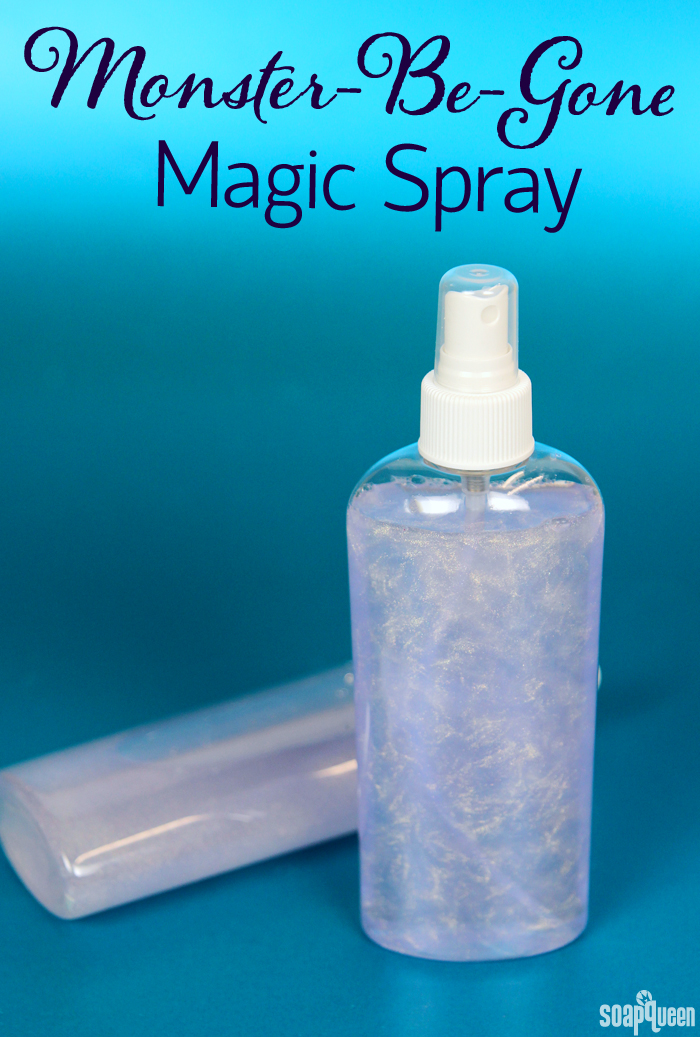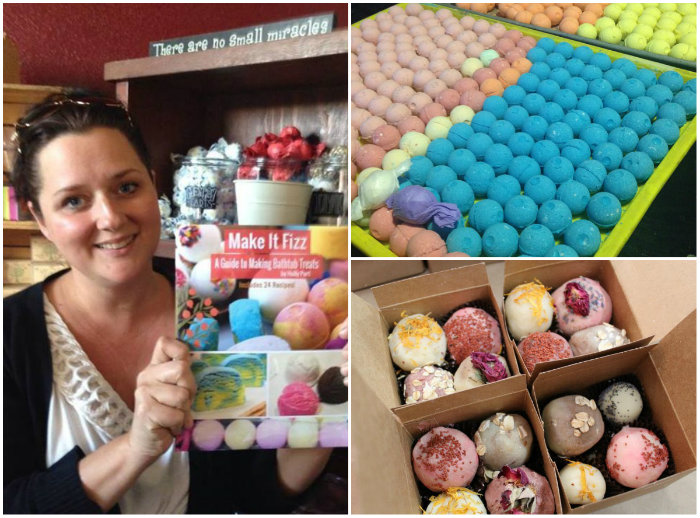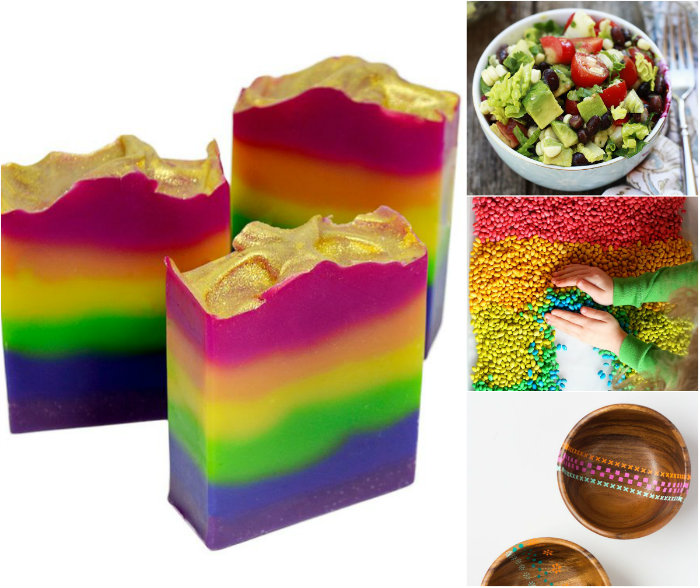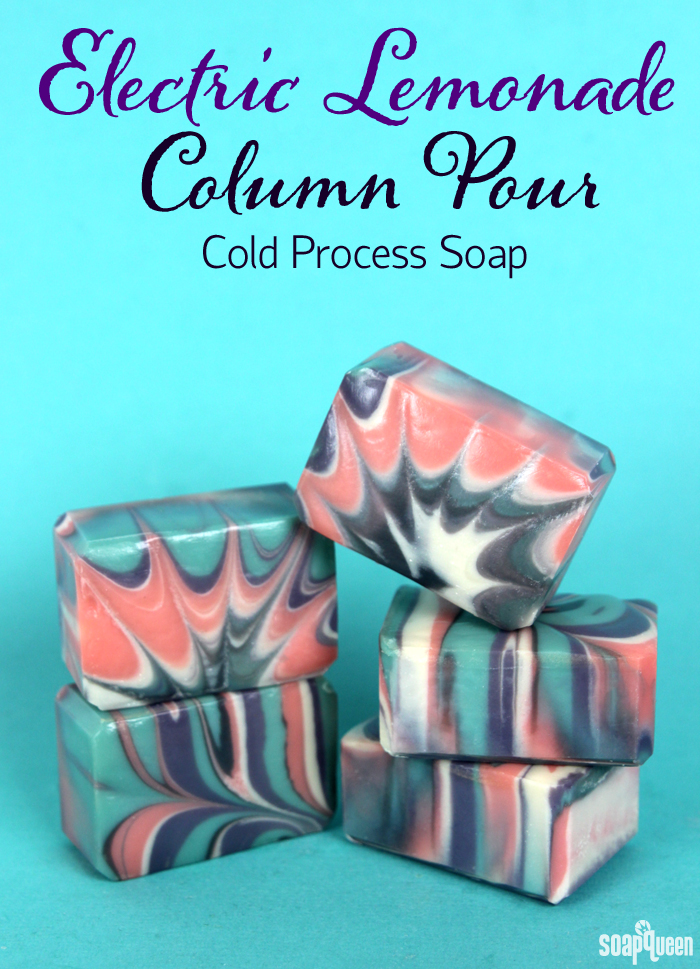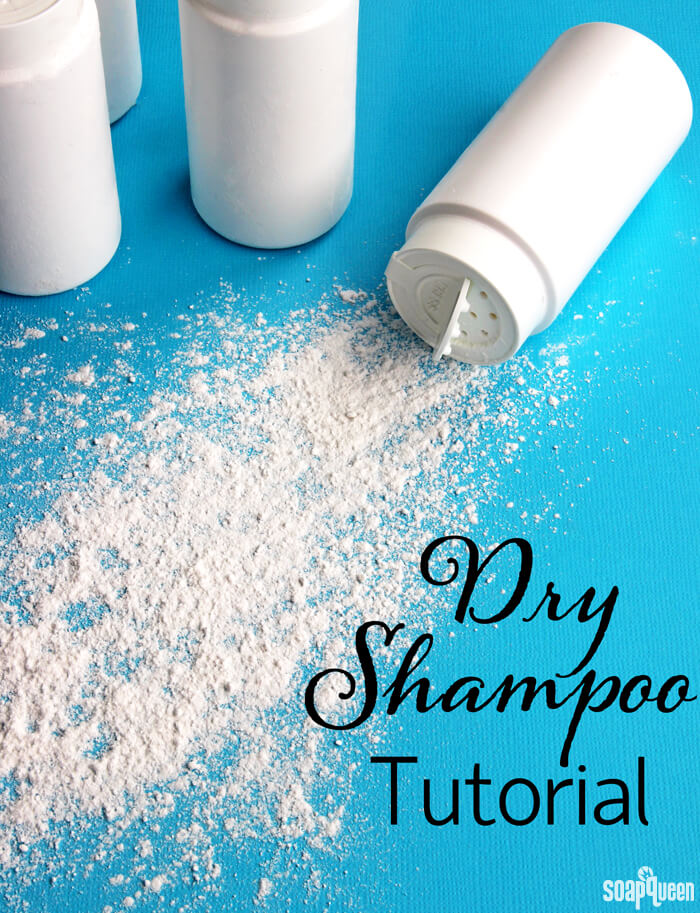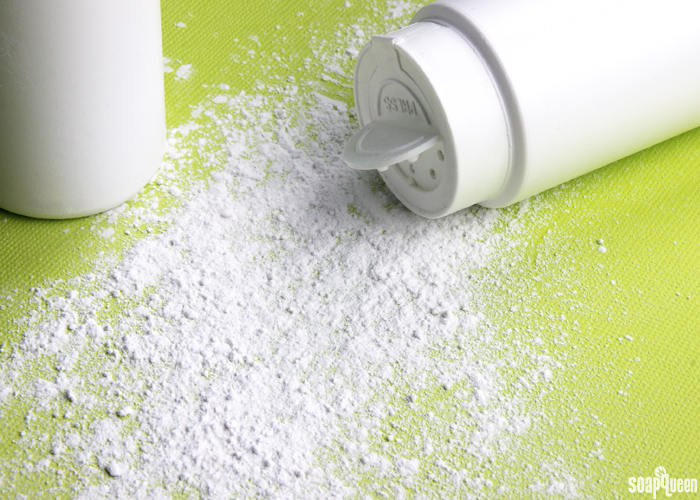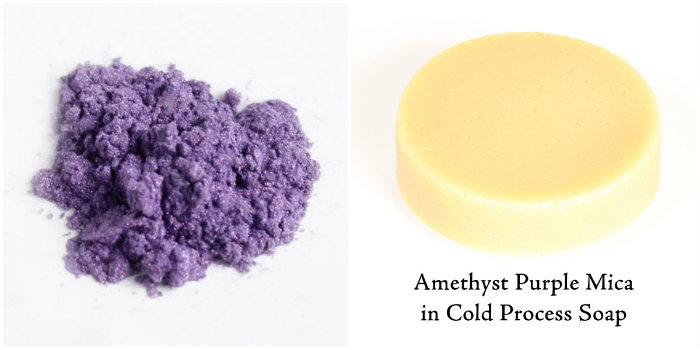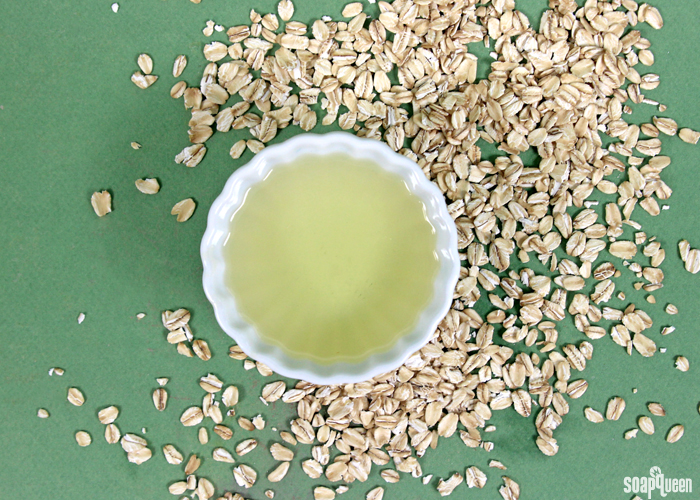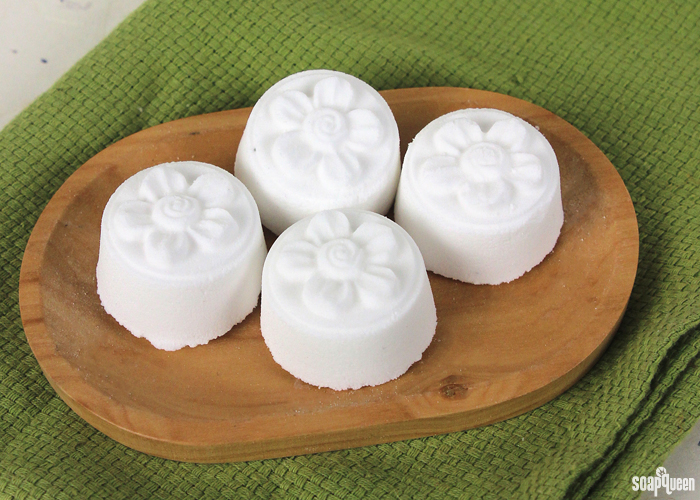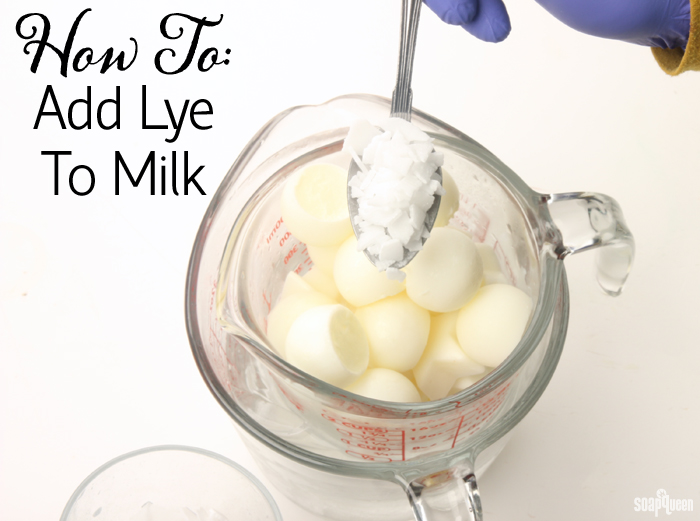Bed time can be a bit of an *ahem*… challenge if you have kids. This is especially the case if you have a kiddo who’s afraid of monsters. While telling your little one there are no monsters can help, you can also help them spray the monsters away!
Guest Post: Sherbet Surprise Bath Fizzies
Today, Holly Port from the Lotion Bar Café is sharing a fun and colorful bath fizzy recipe. Holly is a bath bomb expert and other of the book, Make it Fizz: A Guide to Making Bathtub Treats. This bath bomb tutorial involves making a mini bath bomb, and embedding it into a larger bath bomb mold. When placed in the tub, the fizzy has two layers of color. Holly also shares her story on how she got started making bath fizzies, and the tips and tricks she has learned after hundreds of batches. -A.M.
Hi Soap Queen readers! I’m Holly Port, author of Make it Fizz: A Guide to Making Bathtub Treats and owner of Lotion Bar Café in Colorado Springs, Colorado. Mother of two teenage boys and married for 21 years to my f-bombing assistant (aka) fizzy bomber. I am a bath lover by heart and take one every night for as long as I can remember. For those that have boys can relate, there is not much girlie time left in the day. Bath time was and is my oasis. After being fed up with breaking out with store bought bath products, I looked into making products for myself and also for Christmas presents. Over 8 years ago I made lotion bars and people loved them. I was inspired to make more things. I learned how to make bath bombs and never bought store bought stuff again. My skin felt amazing, no more itchy dry skin or irritations!
I started making 3 to 4 batches a week and would get half to come out and the others went into a big bucket of failure. Either too dry, too wet, pockets full of unmixed dry ingredients. Ugg, the frustration was real! I learn to spritz, spritz, spritz and mix, mix, mix. I took notes over the years including information on the temperature and how much moisture was in the air. Was it raining or did I have a gremlin lurking in my soap dungeon playing tricks on me?
Soapy Social Media Roundup
Happy Mother’s Day weekend! I hope you’re able to spend some time with your mom or loved ones tomorrow. This weekend is especially fun for me because it’s my birthday week as well. I had a fabulous celebratory day; my friends and family all made me feel extra special. Today, I plan on spending lots of outside time with the kiddos and straightening our new, empty house (but that’s a blog post for another day). It has been so warm and beautiful here in the Pacific Northwest…it officially feels like spring!

Above, I spent some time this week in Jamisen’s classroom. It’s so fun to watch him interact with his classmates and teacher; it really makes me realize how fast he is growing up. I would love to be able to lead a crafty project with his class and have just the perfect project for little hands: bath fizzies. If you’re looking for crafty inspiration for yourself, check out my favorite pins, grams and tweets from the week below.
Left to right:
- I love this Rainbow Ombre Cold Process Soap by Kenna of Modern Soapmaking. The LabColors give a gorgeous, subtle bleeding effect.
- This Healthy Mexican Salad is full of color and texture. Any salad with lots of avocado is alright by me =)
- This tutorial for Color Beans for Play and Art looks like something Lily and Jamisen would love.
- Plain wooden bowls from the thrift store are made modern again with a little paint in this tutorial.
I love the sparkle that mica colorants give soapy projects. If you’d like to learn more about micas and how to use them, check out this Sunday Night Spotlight post.
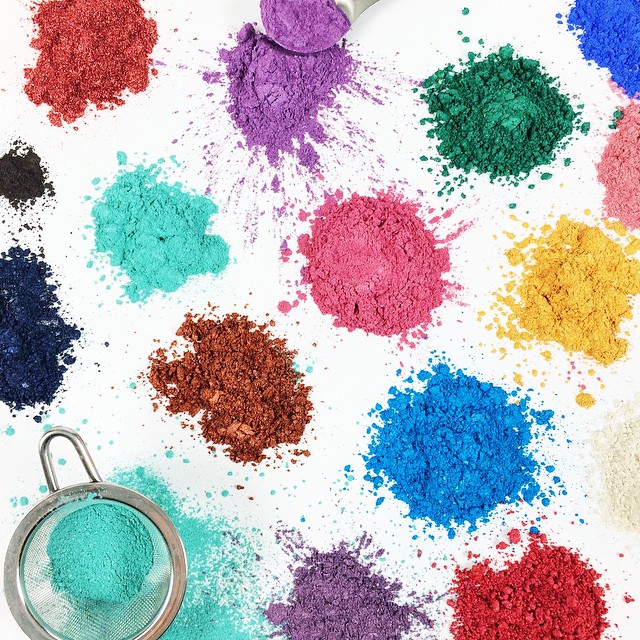 Last weekend, Lily spent the day playing with her baby cousin Alise who is getting so big, so fast(!). The weather was so beautiful! On the right is the final design for an upcoming Soap Queen TV video. This drop swirl is scented with a blend of berry fragrance oils…I can’t wait to film!
Last weekend, Lily spent the day playing with her baby cousin Alise who is getting so big, so fast(!). The weather was so beautiful! On the right is the final design for an upcoming Soap Queen TV video. This drop swirl is scented with a blend of berry fragrance oils…I can’t wait to film!
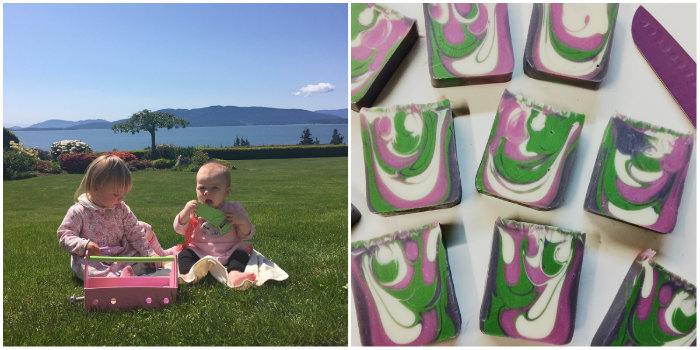
- I love the crisp layers in this Homemade Gardener’s Soap made by Simplistically Living. The exfoliants on top are perfect for removing dirt from gardening.
- In 2014, Tory Burch’s company brought in more than $1 billion in revenue. Her story is so inspiring; click here to learn how she got started.
- Have you heard of the YotaPhone? Released last year, the phone features two displays.
- I’m a huge fan of eggs; they are a great way to add extra protein to salads. This article dives into the terms associated with industrial egg farming to help you choose the highest quality egg.
- Want to turn your blog into a career? The Minimalist Baker has some great tips. My favorite? You gotta hustle!
I hope you all have a wonderful Mother’s Day weekend! To keep up with the latest soapy social media throughout the week, you can follow me on Twitter, Tumblr, Instagram, Pinterest, Vine and YouTube and Snapchat. To watch my ‘stories’, which include sneak peeks into future projects, add me. I’m Bramble-Berry on Snapchat.
Facebook and Instagram Photo of the Week (May 2nd ~ 8th)
This week was full of colorful inspiration, with a vibrant cold process tutorial and information on mica colorants. Micas are a mineral-based colorant that work great in a variety of products, such as melt and pour soap. They are fine textured and usually have a light to intense shimmer. While some micas can morph in cold process soap, they can still be used for mica lines or mica painting. Read more in the Sunday Night Spotlight: Mica Colorants post.
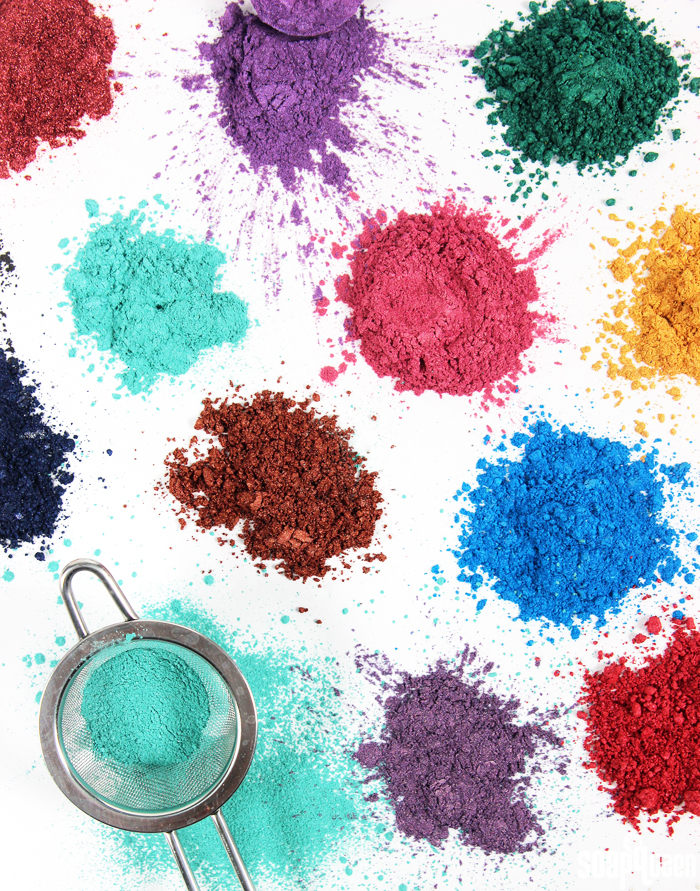
Electric Lemonade Column Pour Tutorial
The column pour cold process technique involves pouring layers of soap on top of a column-shaped tool. As more layers are poured, the soap spreads throughout the mold creating fun patterns depending on the shape of your column tool. For this Electric Lemonade Column Pour Cold Process, we used squeeze bottles to creates circular layers of brightly colored soap. After pouring the layers, the soap can be swirled to make more complex designs. To see another example of this technique, check out the Neptune Column Pour Cold Process Tutorial.
Scented with Electric Lemonade Cocktail Fragrance Oil, this soap smells tart and juicy. These bars used the Swirl Quick Mix to ensure the soap stayed at a thin trace for a long period of time. Don’t want to use a swirl mix and want to create your own recipe? Make sure you have at least 60% liquid oils in the recipe to ensure you have enough time to get the column pour to really work well. For tips on creating your own recipe, click here. Also, be sure to use a fragrance oil that does not accelerate trace. Click here for more tips to avoid trace acceleration.
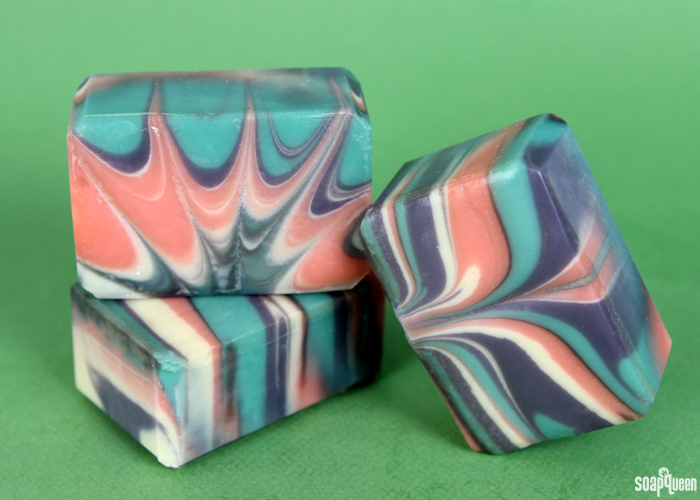
These bars were sent to the first 25 soap swap boxes that arrived to Bramble Berry; I hope those who received them love the fragrance and design! It was so fun to receive all the soap in this year’s cold process soap swap. The team and I were so impressed with the variety and skill in each project. If you’d like to be included in the next swap, be sure to sign up for our newsletter and keep your eyes on the blog and Bramble Berry Facebook page for future announcements.
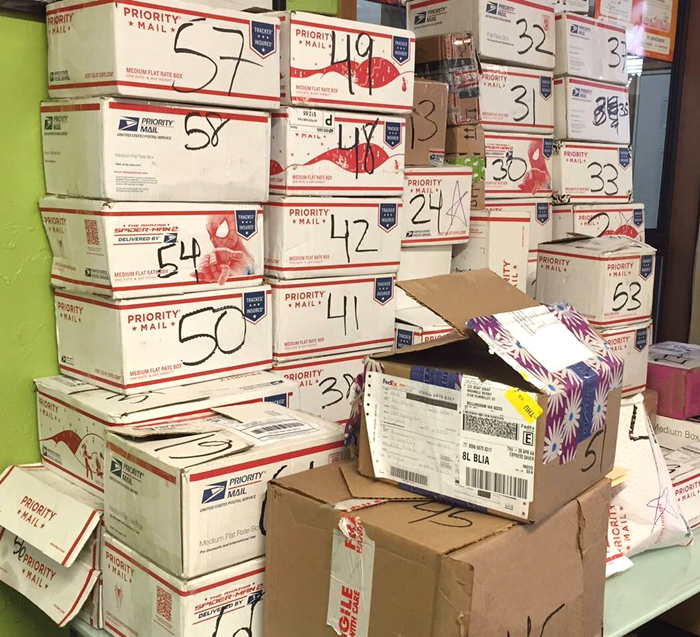 Just a few of the Soap Swap boxes ready and waiting to be swapped!
Just a few of the Soap Swap boxes ready and waiting to be swapped!
How to Store Handmade Bath Products
Properly storing your soapy creations extends the amount of time the product looks and feels its best. For cold process soap, proper storage includes plenty of air flow. On the other hand, melt and pour soap should be wrapped immediately. Improper storage can promote dreaded orange spots, faded colors and glycerin dew. Luckily, it’s easy to prevent these problems with a little know-how.
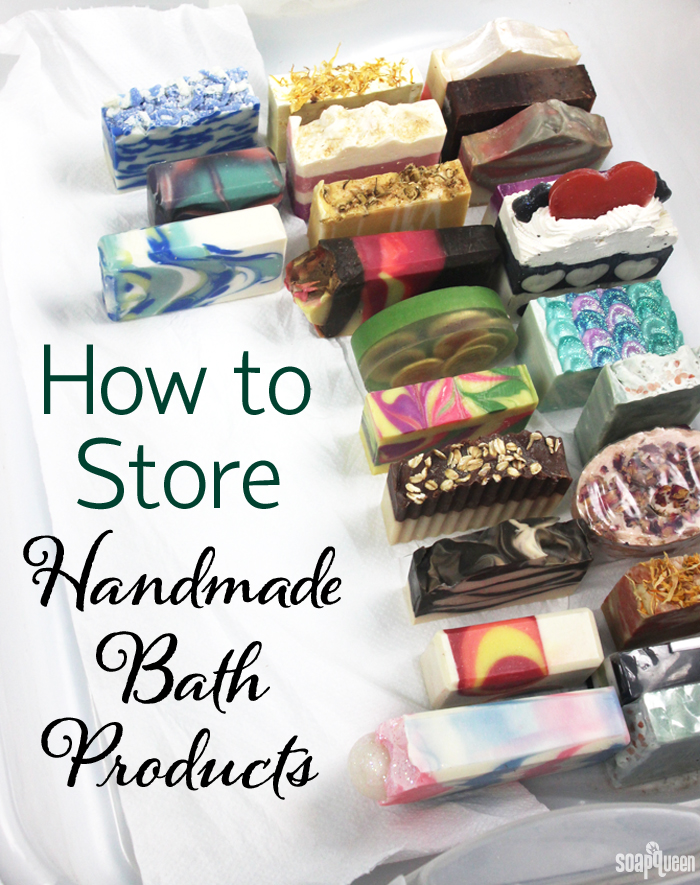 How products should be stored largely depends on what the product is made of, and the shelf life of the ingredients. For nearly all bath and beauty products, it’s best to store them in a dry and cool place. Excessive moisture in the air can promote DOS (read more about DOS here) and cause bath bombs to prematurely fizz. Extreme heat can cause melt and pour (or even cold process) soap to melt, and the texture of lotions and balms to change. If placed in direct sunlight, soapy colors and fragrances may fade. If you live in a hot climate, find the coolest and darkest area of your home to store your products. If you battle humidity in your area, some crafters invest in a dehumidifier to help reduce the amount of moisture in the air.
How products should be stored largely depends on what the product is made of, and the shelf life of the ingredients. For nearly all bath and beauty products, it’s best to store them in a dry and cool place. Excessive moisture in the air can promote DOS (read more about DOS here) and cause bath bombs to prematurely fizz. Extreme heat can cause melt and pour (or even cold process) soap to melt, and the texture of lotions and balms to change. If placed in direct sunlight, soapy colors and fragrances may fade. If you live in a hot climate, find the coolest and darkest area of your home to store your products. If you battle humidity in your area, some crafters invest in a dehumidifier to help reduce the amount of moisture in the air.
Dry Shampoo Tutorial
While nothing beats a hot and relaxing shower, some days it’s hard to find the time. For those hectic days, dry shampoo is a quick way to freshen up dirty hair. The combination of arrowroot powder, talc powder and tapioca powder create an oil absorbing powerhouse that leaves hair feeling refreshed. Simply apply the powder directly to your roots, and use your hands to work in the powder. Scented with Relaxing Fragrance Oil, this dry shampoo smells of vanilla, lavender and musk.
Because the powder is white, dry shampoo can leave a slight powdery color in darker hair. You can add mica color to the powder to darken the powder, but this can make the powder quite messy and may color your scalp. If you’d like to experiment with color in your dry shampoo, we recommend adding 1/2 tsp. of mica colorant to the powder and working up from there. When adding color, the powder will still look white. To test the color, spread the powder on the back of your hand to see the true color. In our tests, oxides did not mix in as well as mica colorants and were very streaky.
Chatting with Sarah of Spicy Pinecone
Sarah of Spicy Pinecone creates gorgeous cold process soap that demonstrate a wide range of techniques, colors and design elements. Her passion for bath and beauty is evident in each creation, which are beautifully presented and photographed. Sarah shares her soaping making on her YouTube channel, which has more than 80 fun and informative videos. Read on to learn more about Sarah, including how she came up with the name of her business, and tips for making YouTube videos. -A.M.
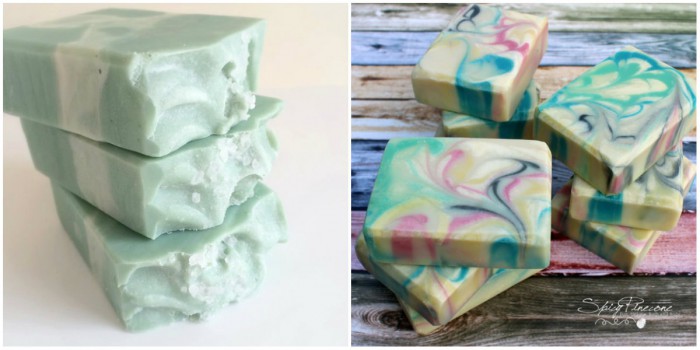 Left to right: Sarah’s beautiful Eucalyptus and Spearmint cold process soap, and the stunning Coconut Lime Verbena cold process soap.
Left to right: Sarah’s beautiful Eucalyptus and Spearmint cold process soap, and the stunning Coconut Lime Verbena cold process soap.
How long have you been soaping for and how did you get started?
I’ve been soaping for a little over three years now. It started off as a stroll through a craft supply store where I spotted some melt and pour soap base and fragrances. I’m always excited to learn about new hobbies, but I had no clue what kind of door I was opening when I took my purchase home that night. As soon as I got home, I made my very first batch of soap. Popping it out of the mold several hours later, I was hooked. Not just a little hooked, but 100% enamored.
As I often do, I dove in headfirst. I lived on Google for a few days, purchased several books on soaping and a ton of soapy supplies. My very first supply box was from Bramble Berry! I loved the thought of making cold process soap, especially since my kids suffered from skin issues; however, at first, the process (especially the lye) terrified me. When I geared up for my first batch, I looked like I was suiting up for war. My very first soap barely filled the mold halfway (lesson 1 was learned, though: learn to calculate mold volume), but I loved those short, squat little bars.
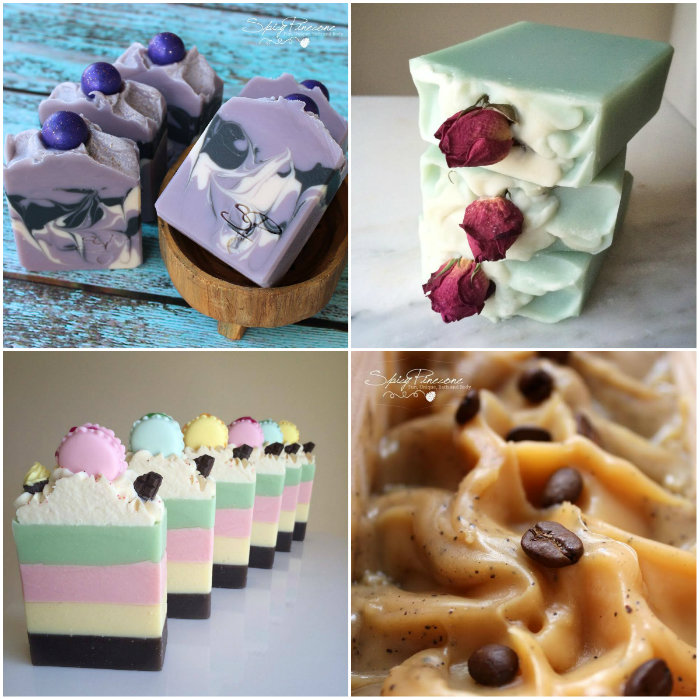 Top left, clockwise: Purple Hooters coconut milk soap, Victorian Rose coconut milk soap, Caffeinated Coffee Soap and Sweet Thang soap.
Top left, clockwise: Purple Hooters coconut milk soap, Victorian Rose coconut milk soap, Caffeinated Coffee Soap and Sweet Thang soap.
What sort of advice would you give to those soapers just starting their businesses?
My best advice is to “research first, make after.” Read as much as you possibly can. Buy books, join groups, watch videos, make Google your best friend. Always be open to learning, no matter how young (or old) your business is. No one knows everything, but a little bit of knowledge can really expand your ability to create.
That is your favorite type of product to make?
My favorite items to make are definitely cold process soaps and bath bombs. There are endless ways to customize cold process soap batches, and to express yourself creatively through design and ingredient use. You can make the same batch twice and still get slightly different variances, keeping things interesting and fresh. Bath bombs are fulfilling because, to me, there’s nothing quite like unmolding a perfect sphere and setting it out to dry. With every bath bomb, there’s a little thrill of, “Yup, I made that.”
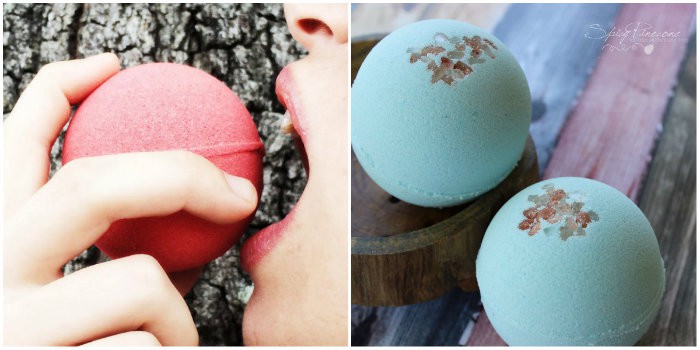 Sarah’s bath bombs look amazing! Click here to shop her bath bombs on Etsy.
Sarah’s bath bombs look amazing! Click here to shop her bath bombs on Etsy.
What inspires you to create?
I find inspiration anywhere and everywhere. Music, my children, nature, even something like a silly comment that makes me laugh. I’m always taking pictures with my phone and jotting down notes with ideas for a later project.
How did you come up with the name for your business?
My husband and I were at the Commissary a few years ago, when my middle son picked up a pinecone that had fallen in the parking lot. He held throughout the entire shopping trip, petting it, and holding it out to others while yelling enthusiastically, “LOOK AT MY SPICY PINECONE!” (He could not pronounce “spiky” for the longest time, so “spicy” it was.) The other shoppers would nod politely and nervously smile, then book it in the other direction. For months, he was obsessed with pinecones. We’d go hunting them in the woods and he’d talk about his “spicy pinecone”… even my daughter and my oldest son picked up on his pinecone devotion. We had baskets of pinecones on the front porch and in all of my planters. I joked with my husband that “Spicy Pinecone” would be a great name for a band, but instead, I picked it for my business because it still makes me smile.
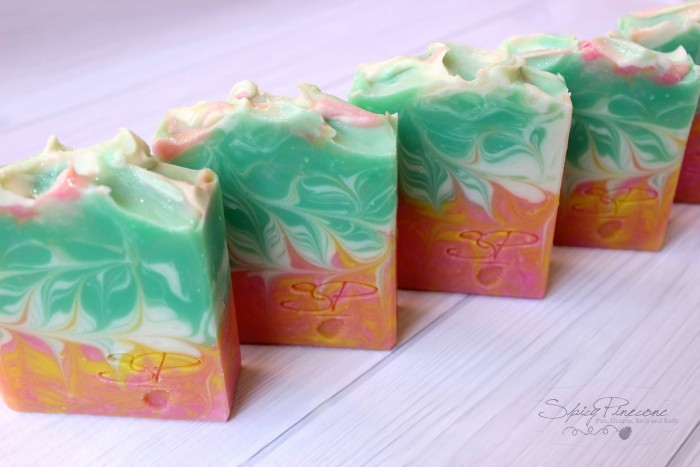 Summer Lovin’ cold process soap fragranced with a blend of floral and musk.
Summer Lovin’ cold process soap fragranced with a blend of floral and musk.
You have such cute and creative names for your products. How do you come up with them?
Sometimes the name of the fragrance oil is inspiration, other times it’s just random stuff that pops into my head. My husband once asked me to make him a “manly-man” soap… so I told him I would make the most “mantastic” of all soaps in existence… thus, “Mantastic” was born. I like to joke and play, and try to bring that lighthearted, fun feeling into my products. If it makes me smile, I like to try and pass it on.
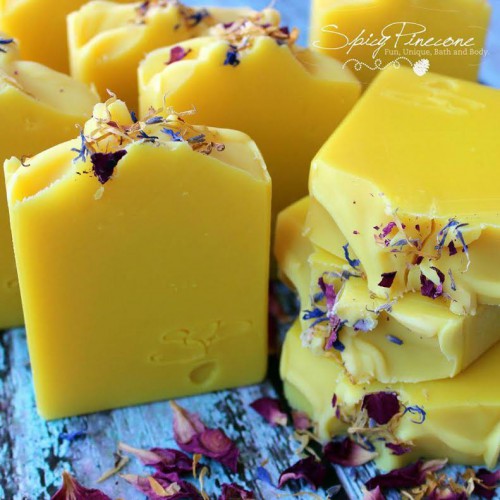 Spicy Pinecone’s stunning “Claire’s Garden”cold process soap made with heavy cream, calendula and chamomile infused oil.
Spicy Pinecone’s stunning “Claire’s Garden”cold process soap made with heavy cream, calendula and chamomile infused oil.
What’s your favorite thing about making YouTube videos?
The absolutely BEST feeling is when someone messages or comments that my video was able to help them in some way. A lot of the time, it’s hard to know if what you’re doing is making a difference or not. When someone posts a “thank you,” it truly does make the time and effort spent well worth it.
What advice would you give to someone who wanted to upload a video on YouTube?
There are a few things to take into consideration when you’re thinking of uploading to YouTube. First, decide what you want your channel to focus on and try to stick to that as much as possible. (People who subscribe to soaping channels expect to see soap-related videos). Next, do not let naysayers get you down. You can’t please everyone, and if you try, you’ll end up sorely disappointed and frustrated. Do what YOU do and do not try to fit into a mold of what you think others want you to be.
Lastly, have fun! Making a video is a way to express yourself and share your creativity. If you find that you’re not having fun, don’t force yourself to do it just because you THINK you should.
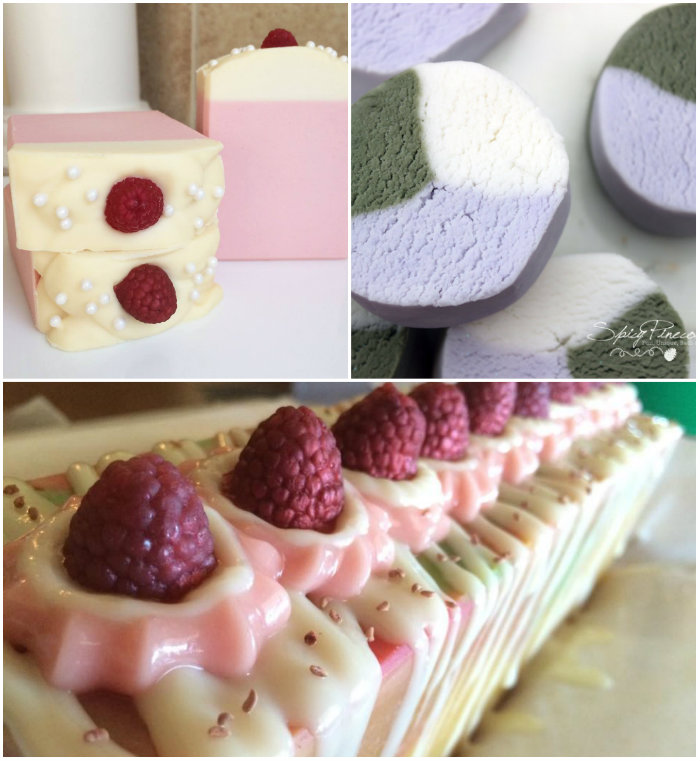 Top left, clockwise: Pink Berry Mimosa soap, Free Spirit Bubble Bath Bars and Raspberry Lemon Cookie Bar soap.
Top left, clockwise: Pink Berry Mimosa soap, Free Spirit Bubble Bath Bars and Raspberry Lemon Cookie Bar soap.
What is your favorite Bramble Berry product and why?
Only one?! Oh my goodness, that’s a tough one. I would have to say the fragrance oils, just because I am an absolute fragrance oil nut. The Buttercream and Snickerdoodle, Baby Powder, Marrakesh, and Energy fragrance oils are at the top of my list. Though I do also have to say that the Small 9-Ball Silicone Mold is invaluable as well.
Tell us something unusual or unique about yourself!
I’ve always been told that I’m “different” from other people, but I view that as a positive thing. If everyone were the same, the world would be such a ho-hum place. I speak Mandarin Chinese, used to breed geckos, and can (poorly) sing the entire “Batty Rap Song” from “Fern Gully.” An odd collection of talents, but life is all about learning new things and it keeps the kids entertained.
What are some of your other hobbies and interests?
Bath and body products are my life, but I also sew, sculpt, paint, crochet, woodwork, blow glass and bake. My husband doesn’t even bat an eye anymore when I announce that I’ve decided to build/create x,y, or z. He’s always been very supportive, even when I had to use his work shirt to stomp out a fire. (Sorry, my love.)
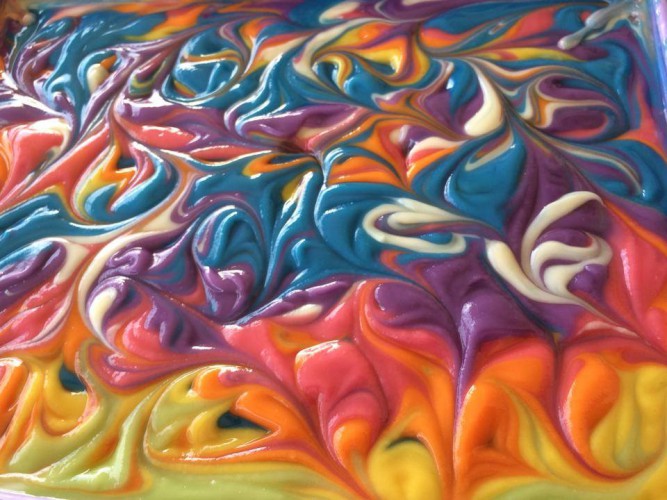 Gorgeous Rainbow Swirly Soap made with cocoa and mango butters.
Gorgeous Rainbow Swirly Soap made with cocoa and mango butters.
What is your number one soaping tip?
Print all of your recipes/notes and file them where you can find them. I used to trust my computer to keep my files safe until it crashed and I hadn’t backed it up. I’ve since moved to a “paper and accordion file” system that has worked like a charm!
Have you ever experienced a horrible soapy fail? How did you work through it, and what did you learn?
I think my most epic fail was my “meat soap.” I didn’t test a purple colorant’s performance before using it and had to rebatch the soap because of its awful color. The soap went from bad to worse, and essentially, looked like ground hamburger but smelled like plumeria. It was the most disturbing thing I’ve ever created and even my husband (who is usually very supportive) could not wrap his head around a flower-smelling meat soap.
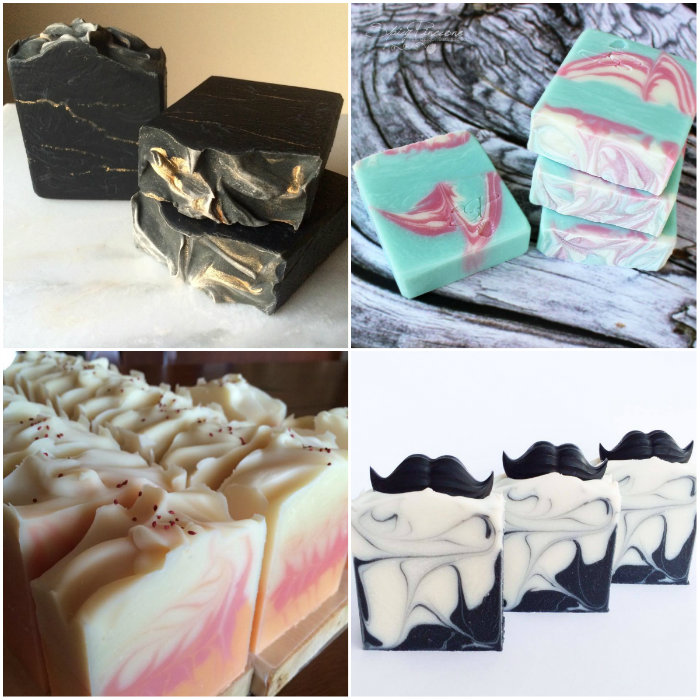 Top left, clockwise: Sarah’s Activated Charcoal soap, Mermaid Lagoon soap, Shave and a Haircut soap and Sweet Magnolia and Orange Blossom soap.
Top left, clockwise: Sarah’s Activated Charcoal soap, Mermaid Lagoon soap, Shave and a Haircut soap and Sweet Magnolia and Orange Blossom soap.
What do you love most about creating bath and body products?
I love when a customer uses a product I’ve made and tells me how much they enjoyed it or how it helped with a certain issue or concern. It gives me a huge sense of satisfaction and purpose. It’s a truly incredible feeling. 🙂
Find Spicy Pinecone:
On the Web
On Facebook
On Etsy
On YouTube
On Instagram
On Twitter
On Tumblr
Sunday Night Spotlight: Mica Colorants

Color is one way to give your bath and beauty projects personality and flair. But with so many colorant options, it can be hard to choose! One of the most popular type of colorant in soap and other bath and beauty products are micas. Micas are a powder colorant which usually contain a slight to intense shimmer. Extremely fine, micas are a great choice because they are easy to mix into a variety of mediums. But, micas can often morph in the high pH environment of cold process soap.
In the soaping world, micas conjure images of rainbow-hued powders with lots of sparkle. In geology, mica refers to a group of metamorphic minerals. Metamorphic rocks and minerals are formed from pre-existing rocks by exposure to extreme heat and pressures. Micas come in many different forms due to the wide array of ways in which they can form within the earth. In fact, there are more than 20 different kinds of mica mineral!
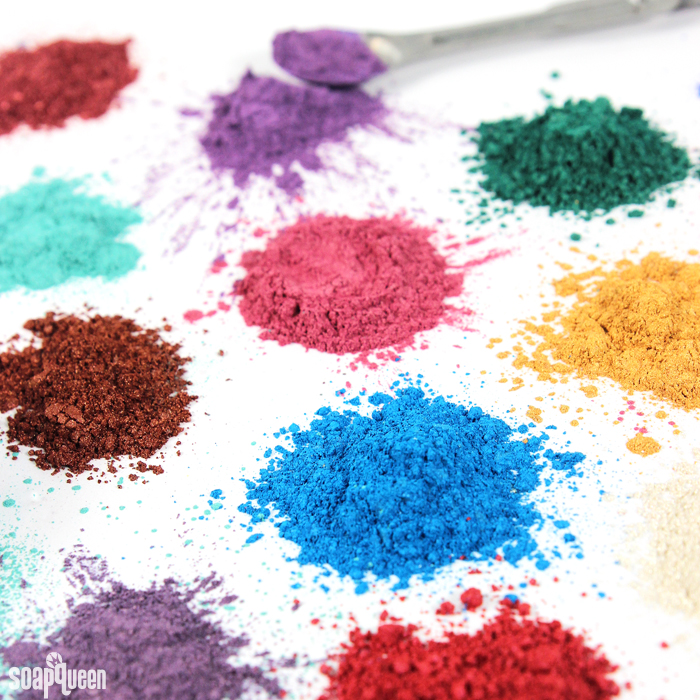
While all slightly different, mica minerals can be described as a shiny, flaky substance that can be peeled off into thin layers. Mica minerals come in a variety of naturally occurring colors. In addition to soap and cosmetics, mica minerals are used in a wide variety of applications including electronic equipment. Once the mica mineral is mined, it’s coated with FD&C colorants, pigments or a combination of both to achieve different colors.
Are micas considered natural? It’s important to remember that the term “natural” is not regulated* and means something different to everybody (click here to read more about the term “natural”). The majority of Bramble Berry’s micas contain only mica and iron oxides, which both readily occur in nature and can be considered natural. If the mica is colored with FD&C colorants, the mica is not considered natural. Below are a list of micas that are colored using FD&C colorants. You can find the ingredients of each Bramble Berry mica in the mica product pages.
* 4/14/16 UPDATE: While there are still no guidelines or a legal definition that constitutes a “natural” product, the Federal Trade Commission (which enforces truth-in-advertising laws) charged five companies for falsely promoting their products as being “all natural” or “100% natural” when the product contained synthetic ingredients. Read more about the charges here.
Bramble Berry Micas Containing FD&C Colorants:
Blue Mica -Cellini Lip Safe Mica
Cellini Red Lip Safe Mica
Coral Mica
Shamrock Green Mica
Yellow Lip Safe Mica
Mica colorants can be used in a wide variety of projects. Unfortunately, most micas morph in cold process soap. For example, Amethyst Purple Mica looks beautiful in melt and pour, but nearly disappears in cold process. Just check out the photo below! Typically, whether or not a mica works in cold process depends on what type of colorant is used to dye the mica. We recommend doing a small test batch to make sure the color is stable in your particular recipe. Morphing is not always a bad thing. Sometimes a mica can morph into a shade that’s still beautiful! For example, Coral Mica results in a soft peach color in cold process, while Cellini Blue Mica turns into a lovely lavender tone.
Even if a mica does work in cold process, it often isn’t very sparkly. That’s because there is no light for reflection (since cold process soap is opaque). To use it in cold process soap, start with 2 teaspoon of colorant per pound of soap, and feel free to add more if you want a brighter color. Because micas are fine and easier to incorporate than oxides, dispersing the colorant in oil is optional.
If a mica morphs in cold process, don’t fret! You can still incorporate them into your cold process projects with mica lines and mica painting. In the Lemon Poppy Seed Cold Process, Luster Black Mica is used to create a thin line between layers of white and yellow soap. The mica line (also known as mica vein) technique can also be seen in the Striped Berry Champagne Cold Process Tutorial.
Mica painting involves mixing the colorant with a liquid oil, which is then applied to the top of the soap and swirled. In the Black, White and Gold All Over Cold Process tutorial, Gold Sparkle Mica creates stunning contrast against black soap. Looking for a brighter color palette? Gold Sparkle Mica painting also looks glamorous against hot pink soap in the Vibrant Mehndi Cold Process tutorial.
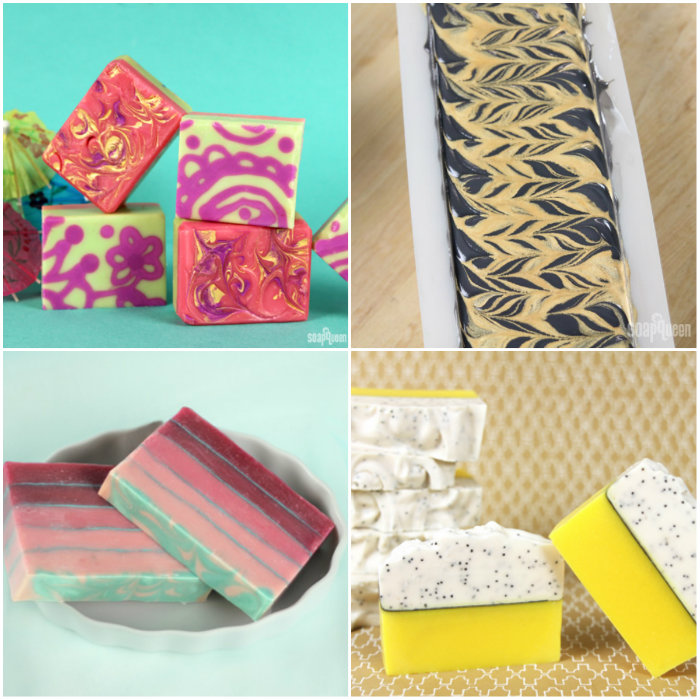 Top row, left to right: Vibrant Mehndi Cold Process, Black, White and Gold All Over Cold Process
Top row, left to right: Vibrant Mehndi Cold Process, Black, White and Gold All Over Cold Process
Bottom row, left to right: Stripped Berry Champagne Cold Process, Lemon Poppy Seed Cold Process
Micas work great in melt and pour soap, with no possibility of morphing. If you are using a clear, transparent or translucent base, we recommend about 1/2 a teaspoon per pound to achieve a nice, strong pearl effect. Simply add the powder into your melted melt and pour soap base. If pesky little “mica bubbles” float to the top, spritz them with a bit of 99% isopropyl alcohol and you’ll see them burst open. Just stir everything in until the mica is well incorporated. For even easier mixing, disperse the mica into a small amount of rubbing alcohol with a ratio of 1 tsp. mica into 1 Tbs. alcohol and add to the melted soap base. You can also use micas in the form of color blocks! Click here to learn how to add color blocks into melt and pour soap.
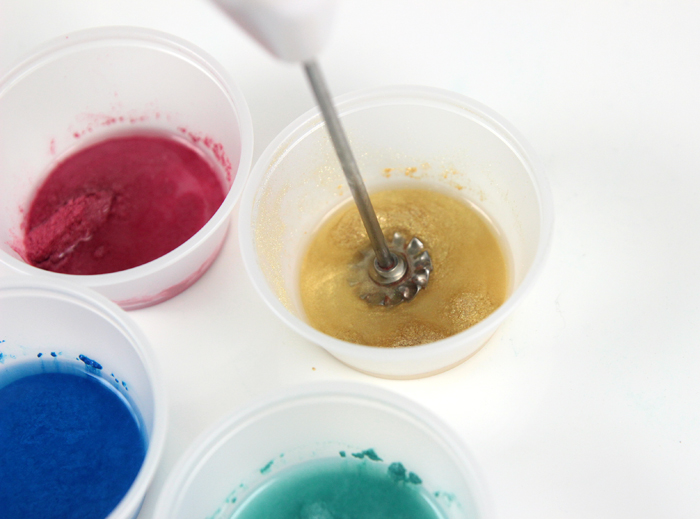 Dispersing micas into alcohol before adding them to melt and pour soap makes them easier to mix in.
Dispersing micas into alcohol before adding them to melt and pour soap makes them easier to mix in.
With a fine texture and lots of shimmer, micas are the perfect choice for eye shadows and lip products. While all Bramble Berry micas are skin safe, rules regarding eye and lip safe colorants are more stringent. Click here to see a list of lip safe micas and colorants, and click here to see a list of eye safe micas and colorants. When adding micas and colorants to lip products, the frozen spoon trick is a great way to check the color before the entire batch of balm hardens. In the Creamy Marsala Lip Tint tutorial, Merlot Mica gives the balm a wine color inspired by the Pantone color of the year, Marsala. If you’re looking to add color to your lids, check out the Mystic Mermaid Eye Shadow + Application Tutorial and the Glamorous Gold Eye Shadow Quad.
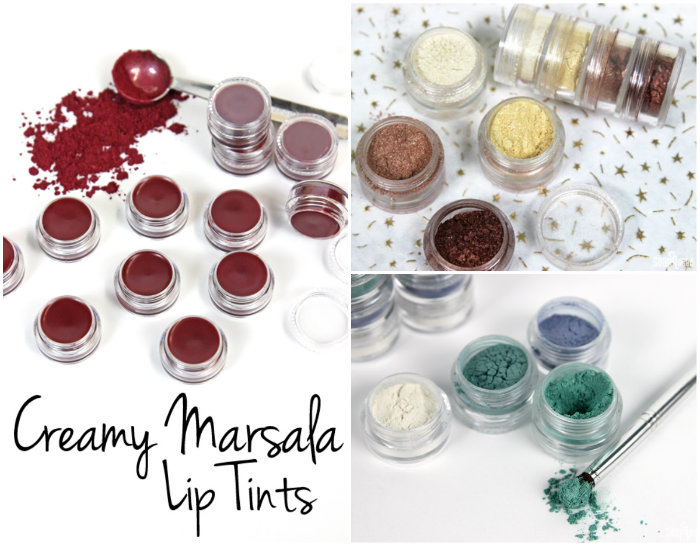 Left to right, clockwise: Creamy Marsala Lip Tints, Glamorous Gold Eye Shadow Quad, Mystic Mermaid Eye Shadow + Application Tutorial
Left to right, clockwise: Creamy Marsala Lip Tints, Glamorous Gold Eye Shadow Quad, Mystic Mermaid Eye Shadow + Application Tutorial
Speaking of micas, we have several new mica colorants that work great in melt and pour soap, lotion, and makeup. The King’s Gold Mica is a wonderfully warm, and rich gold color. The new Snowflake Sparkle Mica is a large particle mica that is incredibly sparkly. Looking for a new shade of pink? The Party Pink Mica and Rose Gold Mica are wonderful options. For a darker, richer hue, the new Desert Red Mica looks fantastic in soap and other projects.
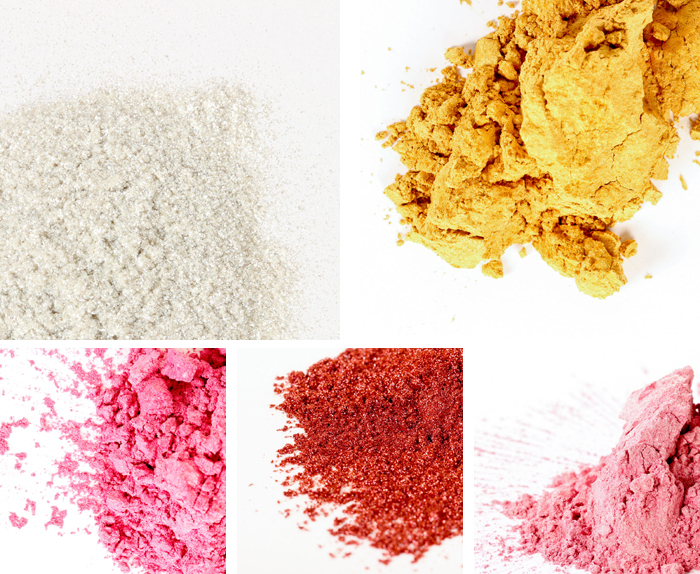 Top row, left to right: Snowflake Sparkle Mica, King’s Gold Mica
Top row, left to right: Snowflake Sparkle Mica, King’s Gold Mica
Bottom row, left to right: Party Pink Mica, Desert Red Mica, Rose Gold Mica
What is your favorite way to use mica colorants in your projects? Do you have a favorite color?
Facebook and Instagram Photo of the Week (April 25th ~ May 1st)
Spring is here, which means it’s a great time for cleaning. This week featured several cleansing recipes, including Fizzy Toilet Fresheners. The fizzies are made with sodium bicarbonate and citric acid, which help protect against stains. They also make your bathroom smell fresh from a combination of Lemon Essential Oil and Peppermint Essential Oil, 2nd Distillation. They’re an easy way to freshen your bathroom in between cleanings.
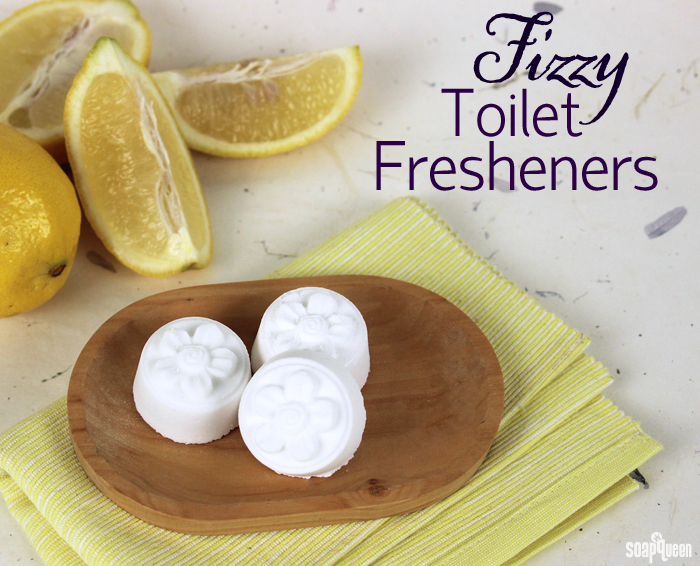
Oat Oil Cleansers for Dry & Oily Skin
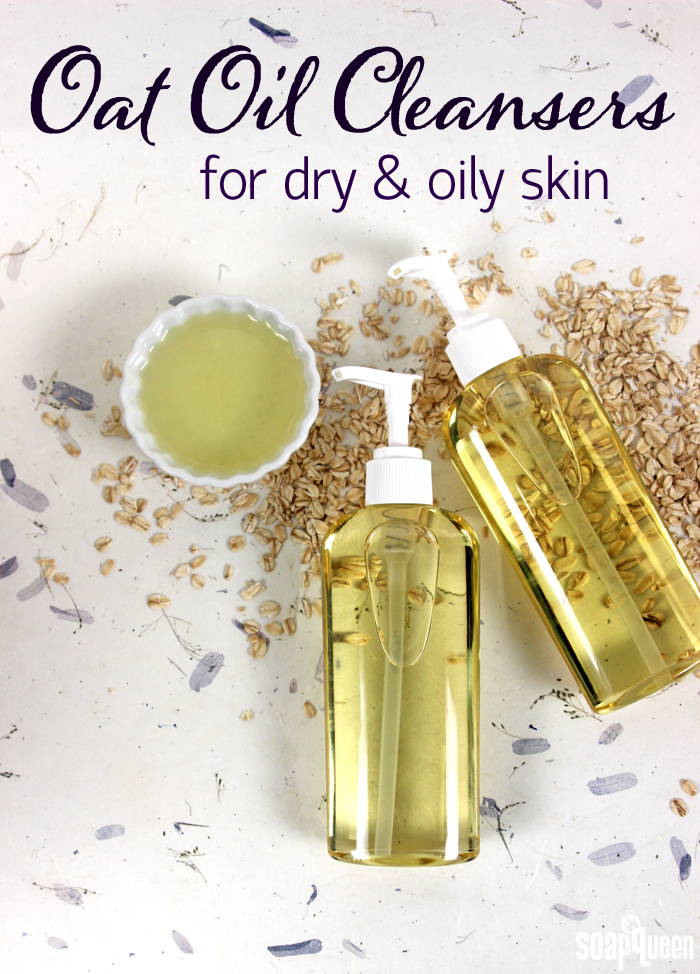 When I first heard of oil cleansers, I was a little skeptical. It seems so strange to “wash” your face with oils. But after lots of research and testing, I now use them in my skin care routine. Cleansing with oil leaves my skin feeling clean and extremely soft. If you’re unfamiliar with oil cleansers, I’ll give you the scoop.
When I first heard of oil cleansers, I was a little skeptical. It seems so strange to “wash” your face with oils. But after lots of research and testing, I now use them in my skin care routine. Cleansing with oil leaves my skin feeling clean and extremely soft. If you’re unfamiliar with oil cleansers, I’ll give you the scoop.
Skin produces sebum from glands called the sebaceous glands. Sebum is an oily, waxy matter that is crucial to healthy skin. It protects the skin from bacteria and helps maintain a balance of water within the skin. Too much sebum can lead to breakouts, and not enough sebum can cause dry skin. Sometimes, when the skin is stripped of sebum from harsh cleansers, the skin can go into sebum-production overdrive. The excess sebum can lead to whiteheads, blackheads and acne. The idea behind oil cleansing is that it dissolves and washes away the sebum produced naturally by your skin, and replaces it with new “clean” oil. This leaves skin balanced, and does not cause skin to overproduce sebum.
Oils have different cleansing properties depending on the oil’s makeup of fatty acids. Because of this, the oils you choose for your oil cleanser will be depend on your skin type. The two important fatty acids to consider are linoleic acid and oleic acid. Skin prone to breakouts produces sebum that has a high oleic acid content. To help balance the skin, oily skin prone to breakouts should use oils with a higher amount of linoleic acid. These oils include castor, hemp seed oil and sunflower oil. On the flip side, dry mature skin may prefer oils high in oleic acid such as argan oil, avocado oil and sweet almond oil.
[Read more…]
The Truth About Vanilla Essential Oil
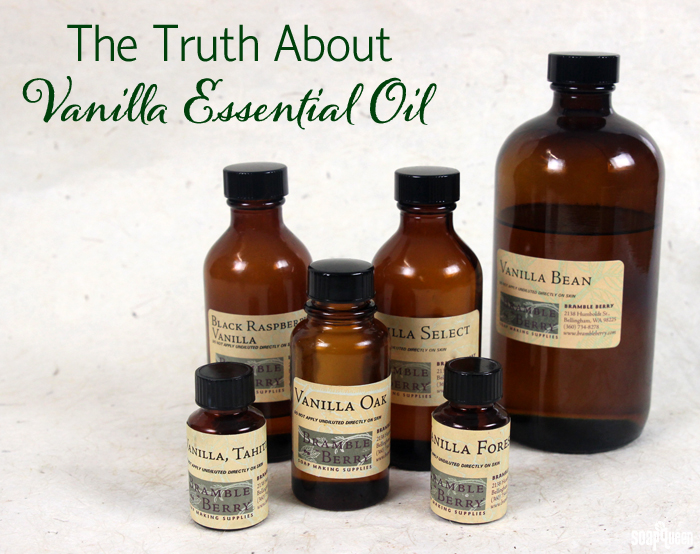
Vanilla may be one of the most popular scents ever. It’s sweet, warm, complex and comforting. It’s versatile and blends well with a variety of other fragrance notes including sweet, spicy, floral and clean. Bramble Berry has more than 10 different vanilla-centric fragrance oils, including Vanilla Bean Fragrance Oil, Vanilla Vanilla Cybilla Fragrance Oil, Sandalwood Vanilla Fragrance Oil and Black Raspberry Vanilla Fragrance Oil.
With so many different fragrance oils featuring vanilla, you’re sure to find just the right blend for your project. But, you may be asking yourself, what about a vanilla essential oil? Can vanilla ever be natural?Good question! The short and rather unfortunate answer is 100% pure vanilla essential oils do not exist. Vanilla fragrance is easy to create synthetically in a lab, but the nature of the vanilla bean does not allow for the distillation process which produces essential oils. Before you say, “Bu, bu, bu, I’ve seen it in the stores,” there is a way to extract scent from the vanilla bean, but it’s not considered an essential oil. Read on to find out the hows and the whys of vanilla absolute and extracts.
[Read more…]
Fizzy Toilet Fresheners
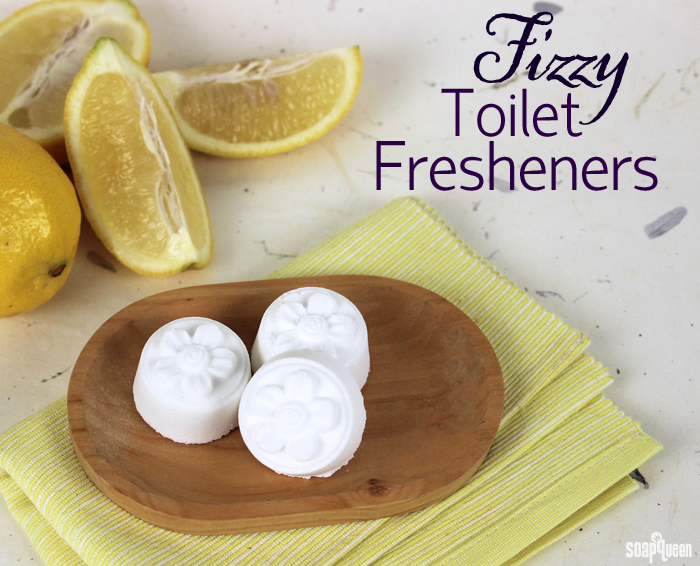
Let’s be honest – cleaning the bathroom isn’t very fun. It’s hard to keep your bathroom sparkling clean when you’re busy with other important tasks (like soaping, of course!) These Fizzy Toilet Fresheners are a great way to freshen your bathroom in between cleanings.
The combination of sodium bicarbonate and citric acid help fight stains. Once the freshener hits the water, it starts to fizz and release a fresh and clean scent from Lemon Essential Oil and Peppermint Essential Oil, 2nd Distillation. You can store them in an airtight container, like the Tall 8 oz. Plastic Bail Jar, and use them whenever your bathroom needs a pick me up.
These fizzies are great for freshening your toilet, but are not intended for use in the bathtub. Because they are strongly scented to mask bathroom odors, the excess amounts of essential oil can cause skin irritation.
Milk Project Roundup
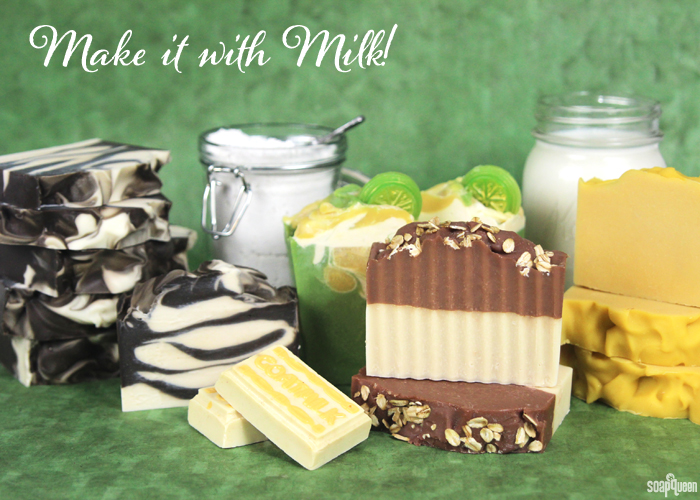
Soap making with milk is popular because of milk’s natural moisturizing properties. For the past two weeks, the blog has been full of soapy projects made with milk and milk powders. Milk can replace up to 100% of the water in your cold process recipe. Because milk contains natural sugars that can burn when introduced to sodium hydroxide lye, it’s important to keep temperatures cool. My favorite way to prevent scorched lye milk is to freeze the milk in advance and add the lye slowly. For more information on creating the lye and milk mixture, check out the How to Add Lye to Milk for Cold Process Soap blog post.
